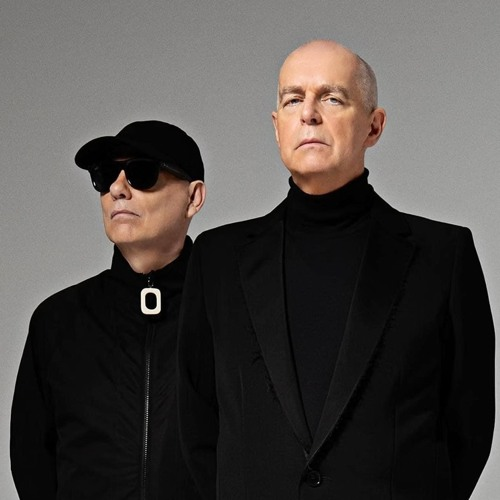In a disorienting opening sequence, László Tóth (
Adrien Brody, in a skillful, intricate performance), a Hungarian Holocaust survivor fleeing war torn Europe, makes his way to America on boat, an askew Statue of Liberty emerges in perspective out of darkness. This vantage reflects Tóth's unique artistic eye as a forward-looking architect, a symbolic foreshadowing of his rocky future ahead, and is also emblematic of the topsy-turvy chaos of America itself. The simplicity of the setup is part of Director and co-writer
Brady Corbet's (
Vox Lux,
The Childhood of a Leader) ability to synthesize large-scale ideas through visual trickery and economical brevity. Economical brevity, may not always describe
The Brutalist, a simply staggering achievement for most of its over its engrossing near four hour run-time.
After Tóth arrives in America, he reunites with his cousin Attila (Alessandro Nivola, impactful in his runtime) to work in his modest furniture store in Philadelphia. A wealthy client comes along, Harry Lee Van Buren (Joe Alwyn, perfectly dunderheaded and bratty), the son of industrialist Harrison Lee Van Buren (Guy Pearce, consistently a mesmerizing scene-stealer), offers László and Attila an opportunity to revamp Harrison's library. This seemingly ordinary ask turns out to be a consequential turn in László's life.
The first half sets everything up meticulously, with László's work-life fluctuating in fits and starts and stops. When Pearce appears with his debonair air, mustache, and crazily crisp, magnetic mid-American accent, you know that things are going to get good (and unwieldy). His opening scene establishes his myopic selfishness and volcanic anger. A later scene where he attempts to bring László back to work, an unsettling calmness, almost tenderness. In what feels like a Biblical proposition, Harrison asks László to design and build an edifice upon a hill beyond his Doylestown estate, a community center of sorts. The building has the potential to cement legacies of both men, through Harrison’s money and László's brilliance and perfectionism. Meanwhile, through the aid of Harrison's influential circle, attempts are made for László's wife, Erzsébet (Felicity Jones, with a more prickly, complicated character than she has been usually given to work with) and niece Zsófia (Raffey Cassidy), mute in the aftermath of the Holocaust, to come to America to reunite with László.
With its engaging performances, impeccable attention to design and costuming, colors and camera angles, I was swept up, almost breathlessly so, by The Brutalist, up through its tick-tocking-down-the-15 minute intermission. Under its historical sweep, its novelistic feel of a changing post-War America (through music, technology, and industry), are its characters' barbed relationships. There's something off about László and Attila, something off between László and Harrison, and a nagging distance between László and Erzsébet, forged in the wake of their agonizing forced separation. What's nice is that the script, written by Corbet and previous collaborator Mona Fastvold (The World to Come), doesn't overexplain these cracks and fault lines, its revealed instead through the characters' communication with one another: the said and the unsaid.

It was a kick to see this section of the film fresh with a New York Film Festival audience, who applauded at the intermission title card. A rousing, crackling feeling in the air of witnessing a new classic. But an unexpected turn in the story, late into the second half, presented as a ponderous twist, took me right out of the picture, as if the film's wonky, supple inner clock suddenly broke—feeling leaden, manipulative. The moment also echoed unclear intentions of another parasitic character earlier in the film, who temporarily derails Tóth's upward mobility. I wrestled and ruminated on this turn for a while after, and ultimately concluded it as a narrative flub. A later scene where a character, coming out of shadows to emphatically voice the incident, feels as if it’s a pivotal moment straining for profundity, but comes off tinny and unpersuasive. That I even feel the need to dance around what happens seems a problem too. I look forward to when it's more widely seen and discussed. Though it began with a sort of off-kilter buoyancy, the weirdly cheeky, rushed-feeling ending to such a engrossing saga was ineffectual as well.
Perhaps so much attention wouldn’t have been drawn to its flaws, nor the need to make comparisons, had it not had such a deliberate intermission that cuts the film into two. However, there’s something compelling in how the second half feels looser, hazier, as the sharpness of the film and its characters unravel. In a way, it shadows the action of erecting a building—its early stages all plotting, planning and mathematical precision, its later, materials and finishing touches. In fact, a sojourn to an Italian quarry for stone, is exquisite, and almost foggily surreal.
There’s so much to appreciate and glom onto in Corbet's film. Brody’s elastic turn highlights his skills—impeccable voicework, a moody, haunting disposition. A tribute to his acting and the film's script, his character isn't as saintly as it could have been in this kind of story, instead complex, quietly thorny. On a limited budget, Judy Becker’s production design is unreal: truly thrilling work, from detailed, believable interiors to the eye-opening building designs. Shot on VistaVision, Lol Crawley’s cinematography matches the film’s sweep and unnerving intimacy. Akin to the film’s underlying sense of darkness and ambivalence, the look and color palate has a fuzzier, muddier quality than the colorful VistaVision films of its peak mid-1950s usage. Also fantastic is Daniel Blumberg’s score: the memorable main motif is almost Aaron Copland-esque in its sense of soaring Americana. The theme oscillates between a myriad of genre (classical, jazz and even pulsing dance-pop), and can be both a driving push and quietly meditative.
For lovers of film, the film’s old-fashioned sensibility mixed with a modern coolness, is particularly refreshing today, where spectacles tend to be shiny and CGI-heavy. Then again, it comes along in the wake of two notable big-budget historical non-fiction epics from directors of significant stature, Christopher Nolan's Oppenheimer and Martin Scorsese’s Killers of the Flower Moon. It takes a lot for a film to be noticed in this busy landscape, where people's scattered attentions are taken by a vast array of media. Though not without flaws, especially in its second act, The Brutalist fits in comfortably with both the sweeping nature of the best film epics of our time and of the past. ***
-Jeffery Berg


















































